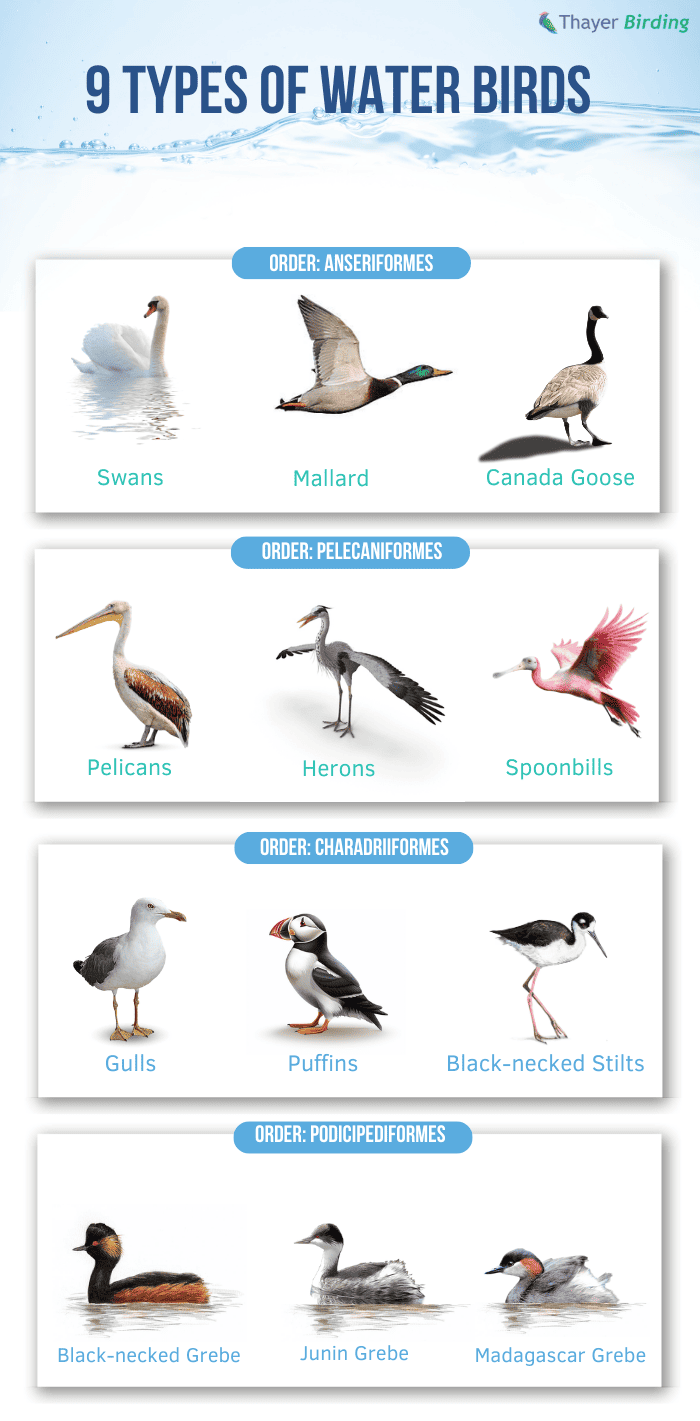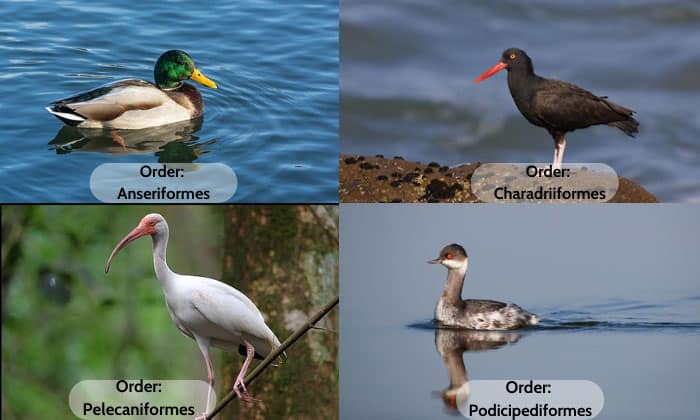Our planet has the right conditions to create countless species of birds, and nearly 10,000 of them are known today. You can spot several avians living in forests, snow, and water.
Some notable types of water birds are penguins, swans, geese, herons, and ducks. Some only stay in wet areas during specific seasons, and many have entirely adapted to water.
Table of Contents
Classification of Water Birds
Before we start our list, know that there are different categories of swimming birds: Anseriformes, Pelecaniformes, Charadriiformes, and Podicipediformes.
Order: Anseriformes
1. Swans
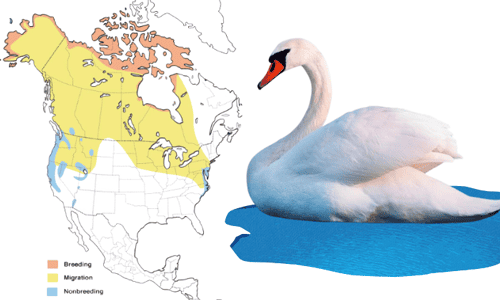
Characteristics:
- Since swans feed on water vegetation, the shape of their long necks and bills help them eat without the need to dive. Their large, wedge-shaped beaks feature serrated edges for catching small fish and worms.
- Female and male swans are almost identical, although the latter has a slightly longer head and wingspan. Both have palmate feet—a subcategory of webbed feet that feature three front-facing toes connected by webbings.
- Northern swans have white feathers, while South swans can be black.
This water bird species sometimes eat plant seeds while feeding, and they spread them through their droppings. Swans also help the ecosystem by controlling the population of other waterfowl.
These days, swans are under threat because of lead poisoning caused by lead shots. In addition, global warming made them lose their migration homes. However, with the increase of agricultural lands, the swans can find new habitats.
2. Mallard
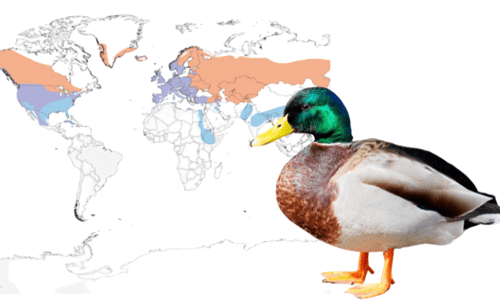
Characteristics:
- Mallards are bulky-looking ducks with an elongated figure, a big bill, and colorful plumage. Both sexes have palmate feet, a large round-tipped beak, and a white-bordered speculum, which is usually black, blue, or iridescent purple.
- Male mallards are noticeably bigger and more colorful than females. They have gleaming seaweed-colored heads, a curled back tail, and a yellow bill.
- Female mallards, meanwhile, are mostly brown.
- The rest of their feathers are usually grays or deep browns.
Mallards are common water birds; they’re mostly from Europe, specifically in the United Kingdom or Iceland. These birds prefer wet environments like marshes.
These ducks play quite an important part in the ecosystem as distributors of minuscule water species, vegetation, and pathogens. Mallards like to move from place to place, and in the process, they transport seeds or even animals to where they’re going.
Mallards often fall victim to local wetland creatures like herons, gulls, and catfish, but that’s all part of the cycle of nature. As of now, this bird isn’t in danger of extinction.
3. Canada Goose
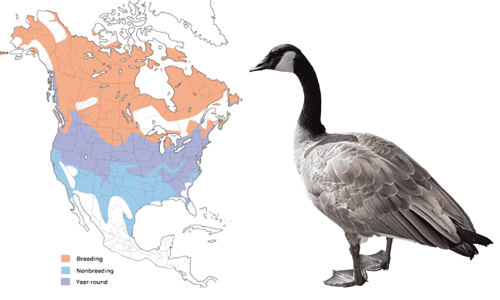
Characteristics:
- The Canada goose is identified by their long, dark-colored neck and a white strip underneath its chin. It’s hard to tell the two sexes apart—the only noticeable difference is that females are smaller than males.
- Its dark, palmate feet and dark brown coats showcase the goose everyone knows.
- They use their long necks and bills with tooth-like ridges to reach out for the vegetable above and underwater dirt.
Canada geese are fresh water birds that can distribute seeds. When they eat food, the seeds are deposited in their waste. The species can be found widely in North America, where they stay during cold mating season.
Another way they can help in the cycle of life is to become prey for predators like foxes and eagles. However, predators aren’t the only threat Canada geese fall victim to – they’re popular in hunting, so much so that they’re under federal protection.
Order: Pelecaniformes
1. Pelicans
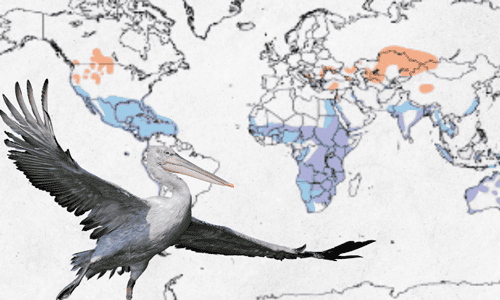
Characteristics:
- Pelicans are identifiable from their elongated bill with the iconic expanding bag throats for capturing food. They have totipalmate feet—meaning a webbing connects their one back-facing and three front-facing toes.
- These birds are usually colored in white. Generally larger than females, males feature a distinct feather tuff on their heads and longer bills.
Pelicans reside in North America, specifically on coasts or marshes. They primarily feed on fish, tiny invertebrates, and even the occasional baby bird.
This type of Pelecaniformes has undergone many struggles, with one of its subspecies (Brown Pelican) suffering a mass killing after a major oil spill. Pollution is a big part of the problems Pelicans face, aside from global climate change.
2. Herons
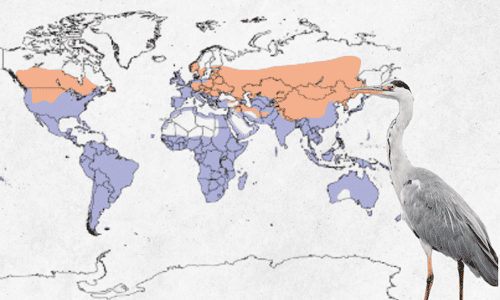
Characteristics:
- People know herons to be a bird with long, wide wings, narrow necks, knobby, skinny legs, and pointed dagger-like beaks for fishing in shallow waters.
- Herons have thin and unwebbed toes, with three facing the front and one facing the back.
- You can identify male herons by their longer ornamental feathers, longer beaks, and larger bodies.
You can find these aquatic birds on every continent, save for the coldest – Antarctica. With their penchant for shallow waters, you’ll see herons in swamps, ponds, or rivers.
A heron’s role is to serve as a status indicator for the ecosystem’s health. Having the presence of a heron shows how an environment is teaming with life.
A heron’s sole trouble used to be foxes and eagles, but now, destroyed habitats are their number one threat. In response, a heron specialist group was founded to ensure the water bird’s conservation.
3. Spoonbills
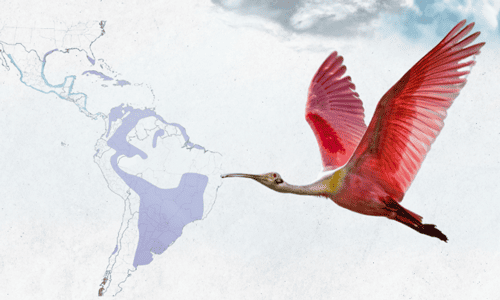
Characteristics:
- Spoonbills are pink all over save for above their chest and neck, which are white. Males have bolder colors than their female counterparts.
- With long beaks in the shape of a spoon, Spoonbills got their name. Their bill adaptation aids them when scavenging for food through the water or scooping through wet soil.
Spoonbills share the same feet structure as herons.
Like herons, spoonbills reflect the status of their habitat, since this species feed on fish, which call for healthy greens and clean water.
Today, American-residing spoonbills face the threat of destroyed habitats caused by floods and land clearing. To counter this issue, man-made marshes were created, and spoonbills are now under protection by law as a vulnerable species.
Order: Charadriiformes
1. Gulls
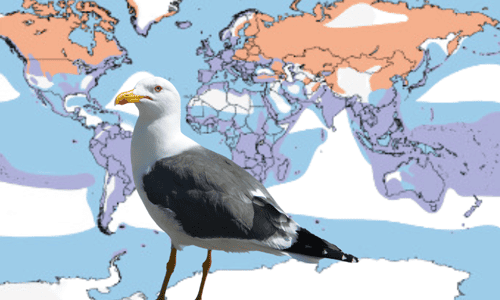
Characteristics:
- You will see gulls, one of the fishing birds names, in their usual light colors—either white or gray. They have webbed feet, sharp beaks for catching food, and black strips on their wings’ tips.
- It’s nearly impossible for a newbie bird-watcher to identify a gull’s gender, considering that the only difference is that males have slightly brighter plumage than females.
You can find gulls on every single continent in the world, even in cold areas. However, they’re rarer in the tropical regions.
Like many birds nowadays, gulls fall victim to pollution, a decrease in food, and destroyed homes at the hands of mankind. As such, they’re now under the protection of the laws.
2. Puffins
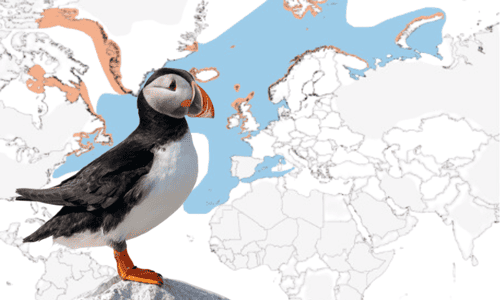
Characteristics:
- If you’ve seen Happy Feet, you’d know puffins are a black and white water bird with a big, colorful beak to match their eyes and webbed feet. Hence why they’re called the “clowns of the sea”.
- Appearance-wise, males and females are nearly identical.
Puffins are found in cold areas like the North Atlantic. Their waterproof coat keeps them warm. The species can take flight and have sturdy bones capable of resisting deep waters.
This water bird indicates the state of the sea—the more fish they bring to their young, the cleaner you know the water is. However, since they live at sea, puffins are vulnerable to oil spills and climate change.
Iceland even targets puffins in their hunting, depleting their population rapidly. To counter this, a Puffin Preservation Society was established, working alongside Scottish Wildlife Trust.
3. Black-necked Stilts
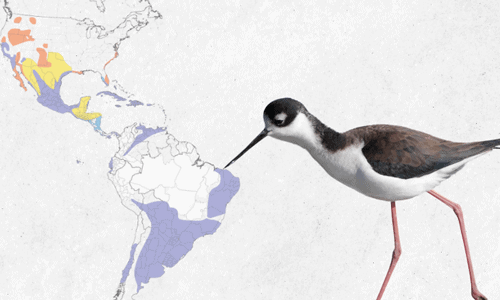
Characteristics:
- Male black-necked stilts have black feathers on their backs and white on their belly. Except for their brownish backs, females look almost the same as their male counterparts.
- These small water birds have no problems finding food in shallow water thanks to their lengthy rose-pink legs and pointed beaks. Their feet consist of three toes, all of which are front-facing and not connected by webbing.
You can find these stilts in North and South America, but with their homes destroyed and pollution from pesticides on the loose, surviving is a challenge. As of now, the stilts are under the protection of basic wildlife laws to counteract these threats.
Order: Podicipediformes
1. Black-necked Grebe
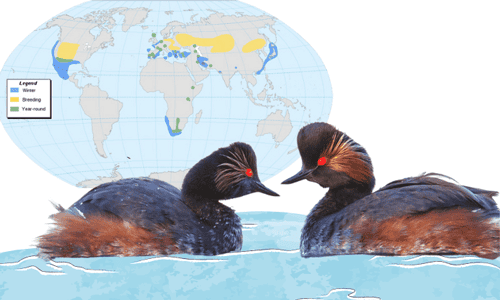
Characteristics:
- The black-necked grebe has a black needle-like beak, as well as black plumage around its neck, head, and back. The remaining feathers are a bright brown that fades into gold around the corners of its eyes. Both sexes are identical in appearance.
- The grebe has a unique foot position—at the rear of their body. While this makes walking somewhat tricky, it’s excellent for propelling the bird’s body forward in the water.
Black-necked grebes’ diet mostly consists of the water creatures residing in their habitat, such as insects, tadpoles, frogs, and brine shrimp. You can spot these birds in vegetated areas of freshwater ponds, lakes, marshes, or salt bays. They’re distributed in Africa, America, and Eurasia.
Though they’re far from extinction, this grebe is still under threat from depleting food resources because of their water grounds’ increase in salt content. However, as of now, the black-necked grebe is not a priority in terms of conservation.
2. Junin Grebe
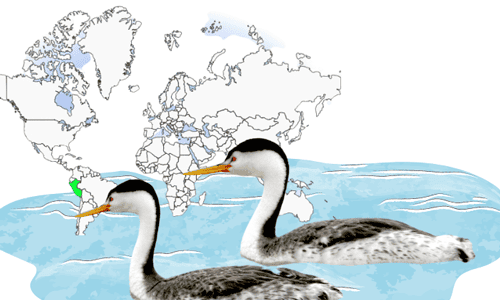
Characteristics:
- The Junin grebe has a simple and sleek black-and-white plumage. Its most iconic feature is its vibrant, scarlet eyes. Both sexes of this species look similar.
- Its thin neck, small head, and sharp beak make it quite skilled in hunting for aquatic creatures to contribute to the food chain. And like its black-necked cousin, Junin grebe has legs on its rear that make wadding uncomfortable.
The endangered Junin grebe is flightless, so it’s confined to Lake Junin, hence its name. With the ecosystem’s health in decline caused by industrial, military, and mining pollution, a decision was made to have the lake protected.
In addition, the Association of Andean Ecosystems dedicates itself to protecting vulnerable animals within the region.
3. Madagascar Grebe
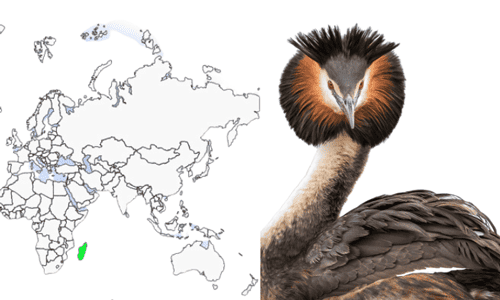
Characteristics:
- The Madagascar grebe has a black head, white belly, and grey upper part. Most of its neck is grey, although the sides of the upper neck are a distinctive reddish brown. Similar to other grebes, there are little differences between the two sexes.
- Madagascar grebe’s legs are also positioned at their rear, featuring lobed toes that aid swimming.
As you can likely surmise, this species can only be found in Madagascar, specifically in the western and central regions.
The Madagascar Grebe has adapted as a water bird to live and take their food from the water with their floating nests. However, because of this evolution, they cannot walk properly on the ground or take flight.
This grebe’s population is on the decrease after losing their habitats and being preyed on by larger aquatic lifeforms and invasive species. To aid this endangered species’ survival, the government moved to protect wetland environments.
Frequently Asked Questions
What is the lifespan of water birds?
Birds have different lifespans depending on their size and species. Through study, it’s been found that if a bird is small, they live far less, just around five years. However, big birds can go for as much as twenty years.
In general, many water loving birds can live for as much as twenty to thirty years. For example, the Puffin’s and gull’s lifespans extend to thirty and twenty years, respectively.
How can individuals contribute to the conservation of water birds?
As an individual, you have the power to aid in the conservation of water birds in your own way. You can protest farmers who use chemical pesticides and mitigate the carbon footprint you leave by reducing, reusing, and recycling.
If you want to do more, you can join conservation groups dedicated to helping water birds.
Conclusion
With millions of years of evolution, birds have evolved into the thousand species you know today. There are many types of water birds, and they’ve all adapted to be efficient in hunting and living in different bodies of water.
However, with today’s environmental changes, many birds are being affected and under threats of extinction, which makes preservation efforts more necessary than ever.
That’s all for our water bird list here today. Have you learned the identification of birds that live in water and land?

George and I became friends after a birdwatching trip with our new group. And we have been enjoying every adventure together. When he told me the idea of establishing a site that shares our experiences and fun, I immediately agreed. After trials and errors, here we have Thayerbirding.



